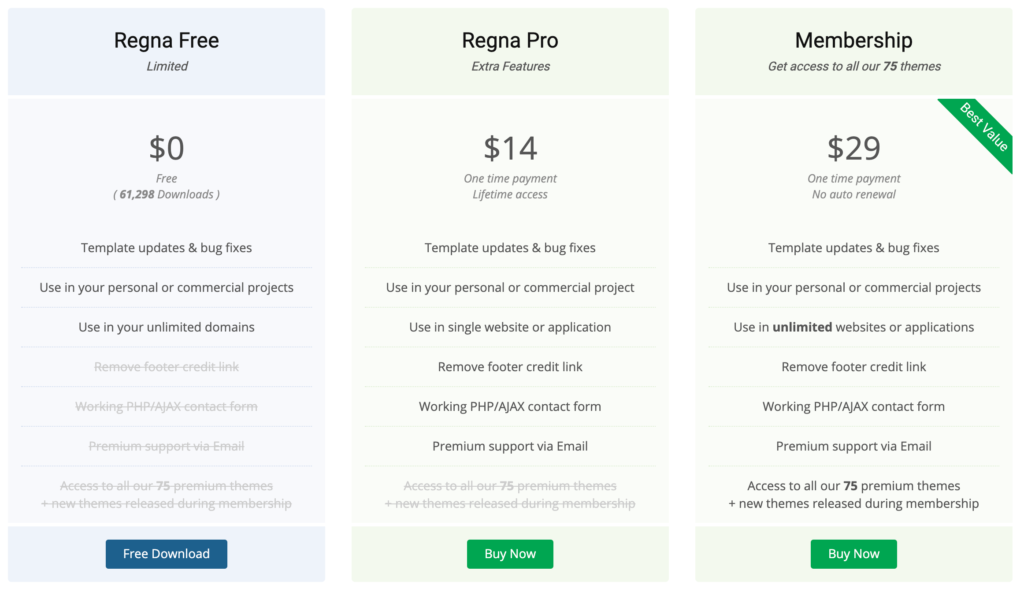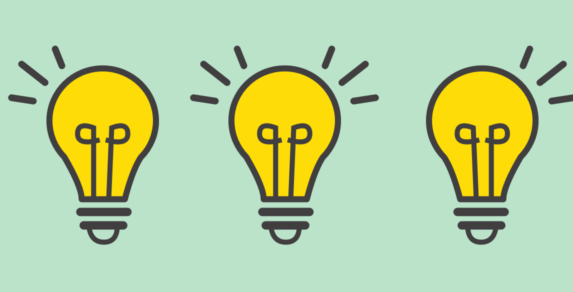For SaaS companies, the pricing page is probably one of the most important pages on your website, yet we often find it is one of the most overlooked and neglected pages on a customer’s journey.
Why do we think the product and pricing page is so important?
Often times while building a new service, we see that no matter what team members are involved, whether its marketers, developers, founders, product managers, investors…whomever…they are focused on building a really great and innovative product.
It makes sense. New SaaS products require constant innovation and unique features.
So, after building out an amazing product tour, crafting a brilliantly designed home page, typing up some content for the blog, and making sure the registration flow works, we put this on the website:

See the issue?
It’s confusing. It’s complicated. There is little structure and beyond a color change, there doesn’t seem to be a ton of thought going into this standard looking boot-strap pricing grid.
But more than anything, it’s boring.
When looking at an acquisition funnel, we often find that customer acquisition marketers aka growth hackers get fixated on driving traffic to the site (in the form of CPC and CTR), then become fixated on the overall conversion rate and revenue generated from the site (CVR and AOV).
There is nothing wrong with this on a 40,000-foot view.
But you’re missing out on a significant opportunity by not looking at the click-through rates of your pricing page.
A visitor who has taken the product tour, engaged with your blog content, checked you out on social media, and finally decided to check your pricing page, needs to be nurtured into a customer.
With an insanely well-designed pricing page, you can increase your conversion rates, increase your order value, while at the same time reduce your customer acquisition costs. Click To Tweet
Let’s look at two hypothetical pricing pages with only a minor incremental lift in CTR (click-through rates). We will assume everything else stays the same.
Original Pricing Page |
Optimized Pricing Page |
|
Visitors |
1,000 | 1,000 |
Cost Per Click |
$1 | $1 |
CTR (Click Through Rate) |
5% | 6% |
Conversions |
50 | 60 |
Cost / Conversion |
$20 | $16.67 (-$3.33) |
As you can see, by increasing the CTR by only an incremental 1%, the customer acquisition costs went down by about 16%.
Just pause to think about that in a broader context.
If your CAC’s went down by 16%, that means you could either spend the same amount of money and expect to acquire 16% more customers. Or you could take the savings and invest it back into the business.
If your CAC’s went down by 16%, what would that do to a SaaS business when looking at LTV? The impact is simply profound.
What’s even more exciting, this 1% lift in CTR is not out of the realm of possibility with basic CRO principles being applied to a pricing page (or the entire website in general)
But can we make this even more of a compelling case?
Again, let’s compare two journeys on an overly simplified funnel with 3 hypothetical plans for a SaaS product.
Package Tier Break Down
Tier 1 |
Tier 2 |
Tier 3 |
|
Price |
$50 / month | $100 / month | $150 / month |
Distribution |
25% | 50% | 25% |
For simplicity sake, we are assuming there is no change in churn, chargebacks, etc.,
Original Pricing Page |
1 YR Revenue |
|
Conversions |
100 |
|
Tier 1 Sales ($50/mo) |
25 | $15,000 |
Tier 2 Sales |
50 | $60,000 |
Tier 3 Sales |
25 | $45,000 |
12 Mo Revenue |
$120,000 | |
The overall AOV in this scenario is about $100, and generates $1,200 per year.
With this in mind, let’s do the same analysis of the two journeys but with slight changes in product distribution, which was done by utilizing CRO to bump people up into higher packages. Again, these are small changes…
Optimized Pricing Page |
1 YR Revenue |
|
Conversions |
100 |
|
Tier 1 Sales |
15 | $9,000 |
Tier 2 Sales |
60 | $72,000 |
Tier 3 Sales |
25 | $45,000 |
12 Mo Revenue |
$126,000 | |
In this scenario, with only some minor distribution changes to the midtier plan, the AOV went up to $126, or $1,516 on an annual basis, an increase of 26%. What would your business do with an extra 26% of revenue on the same users?
Imagine if you combined both the conversion rate lift from our first scenarios as well as the AOV shift?
Well, we did the math for you 🙂
Original Pricing Page |
Optimized Pricing Page |
|
Visitors |
1,000 | 1,000 |
Cost Per Click |
$1 | $1 |
CTR |
5% | 6% |
Conversions |
50 | 60 |
Cost / Conversion |
$20 | $16.67 ($3.33) |
AOV |
$100 | $126 |
Revenue |
$5,000 | $7,560 |
| +$2,560 (+51%) |
In this hypothetical business, by simply increasing the CTR 1% on the pricing page, and shifting the users into a higher plan, this SaaS company just added an incremental 51% revenue to their business.
What activities are you focused on today that drive results like this?
These are small wins for a CRO agency (like ClickThere), but huge wins for a SaaS business.
So there you have it. This is why the pricing page (and your overall funnel’s performance) can make such a huge impact on a SaaS business. By implementing winning tests and expecting only minimal results, the output from your funnel can be significant.

